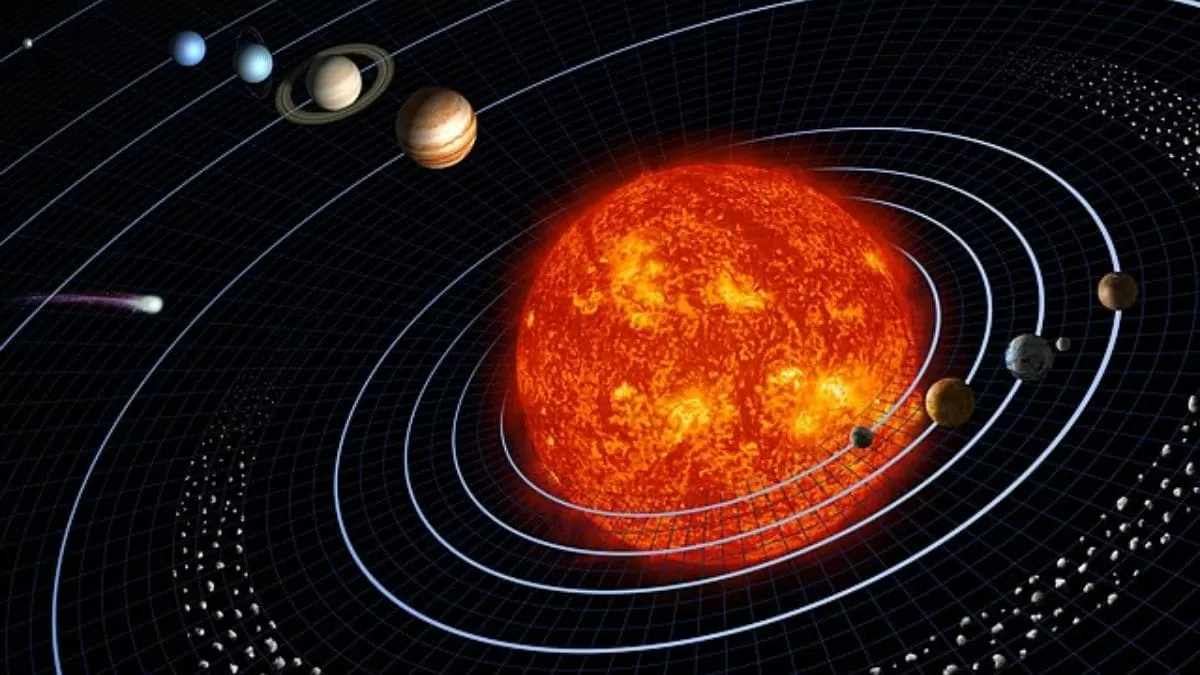A groundbreaking discovery in the field of planetary science has recently been made, and it may change everything we thought we knew about the formation of our solar system. A team of researchers has found evidence that suggests rocky planets, like our own Earth, may have formed at the same time as those beyond Jupiter. This finding challenges long-held beliefs and could have major implications for our understanding of planetary formation.
For decades, scientists have believed that the inner rocky planets, such as Mercury, Venus, Earth, and Mars, formed closer to the sun, while the outer gas giants, like Jupiter and Saturn, formed further away. This theory, known as the “Grand Tack” model, proposed that Jupiter migrated inward towards the sun, disrupting the formation of the inner planets and pushing them closer together.
However, new research published in the journal Nature Astronomy has presented evidence that suggests a more synchronised origin for rocky planets across the solar system. The team of researchers, led by Dr. Ramon Brasser from the Earth-Life Science Institute in Tokyo, studied meteorites that originated from the outer solar system and found that they contain minerals that are only found in rocky planets. This discovery challenges the Grand Tack model and suggests that rocky planets may have formed simultaneously across the entire solar system.
This finding is significant because it not only challenges previous models but also provides a more comprehensive understanding of how our solar system came to be. It suggests that the formation of rocky planets was not a chaotic and disrupted process, but rather a more synchronised and orderly one. This could have major implications for our understanding of planetary science and the search for life beyond Earth.
One of the most exciting implications of this discovery is the potential for habitable planets beyond our solar system. The synchronised formation of rocky planets suggests that there may be other solar systems out there with multiple Earth-like planets, increasing the chances of finding habitable worlds and potentially even extraterrestrial life.
Moreover, this finding also has implications for our understanding of the formation of Earth itself. It has long been believed that our planet formed from the collision of smaller bodies, but this new research suggests that Earth may have formed from the accumulation of material from the outer solar system. This challenges our current understanding of Earth’s formation and opens up new avenues for research.
The team’s findings were based on the analysis of meteorites, which are fragments of asteroids that have fallen to Earth. These meteorites provide a unique opportunity for scientists to study the composition of other planets in our solar system. By analyzing the minerals present in these meteorites, the researchers were able to determine their origin and gain insight into the formation of our solar system.
This discovery also highlights the importance of continued research and exploration in the field of planetary science. With new technologies and advancements, we are constantly uncovering new information about our solar system and the universe beyond. This finding is a testament to the power of scientific inquiry and the endless possibilities that lie ahead.
In conclusion, the recent discovery that rocky planets may have formed simultaneously across the entire solar system challenges long-held beliefs and provides a more synchronised origin for our rocky world. This finding has major implications for our understanding of planetary formation and the search for life beyond Earth. It also highlights the importance of continued research and exploration in the field of planetary science. As we continue to unravel the mysteries of our solar system, who knows what other groundbreaking discoveries await us. The possibilities are endless, and the future of planetary science is brighter than ever before.

